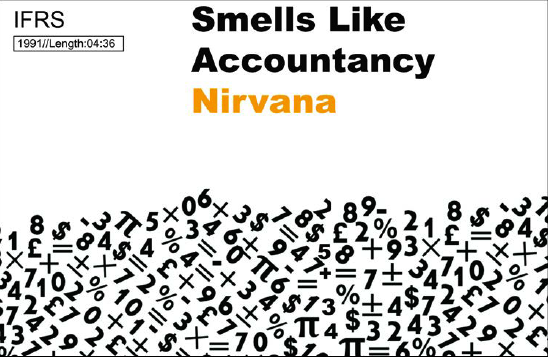Accounting standards are not perfect and at the final level of your accounting examinations it is necessary to be able to discuss their limitations and analyse their inconsistencies.
Is goodwill really an asset?
Not if it is inherent goodwill! This is non-purchased goodwill which is never recognised as an asset as, after all, there is no underpinning transaction, no reliable measure and, arguably, no control. This is not controversial; after all the purpose of the statement of financial position is one of stewardship and being accountable to the users of the financial statements and is NOT an attempt to value the business.
Yes if it purchased goodwill. The standard requires that the purchased goodwill on a business combination (the premium arising on consolidation) be recognised as an intangible asset in the group accounts. This was not always the case. For example, when I was a student (many years ago!) purchased goodwill was not accounted for as an asset, rather it was immediately written off against group reserves.
Some still argue that purchased goodwill is not an asset at all, given that an asset by its definition per the IASB’s conceptual framework is a resource that is controlled. But how can a business control goodwill, its own reputation? It is also a strange asset that cannot be separately sold.
Nevertheless, the standard is adamant that purchased goodwill is to be accounted for as an intangible asset, arguing that it represents a bridge between the parent’s investment in the subsidiary and the consolidation of the subsidiary’s net assets in group accounts.
A consequence of one type of goodwill being recognised and another not is that financial statements of companies that grow by acquisition (reporting purchased goodwill as an asset) and companies that grow organically (with no goodwill reported) are just not comparable. This is confusing for the users of accounts.
So should purchased goodwill be subject to an impairment review?
The standard requires that purchased goodwill is subject to an annual impairment review. But is it right to subject goodwill to an annual impairment review? Perhaps instead it should be systematically amortised.
It can be argued that where, year after year, the purchased goodwill is impairment tested and not found to have suffered a loss, that what is really happening is that the original goodwill (reputation, staff & customer loyalty) is actually being dissipated and is really being gradually replaced by newly created (inherent) goodwill. After all, if you measure the amount of water in a pond every year you could conclude that the water level never falls, but surely after ten years the original water there has evaporated and been replaced by new different water!
The original water in the pond is like the original goodwill at acquisition, it does dissipate over time as staff leave and new customers are attracted. It can be argued on this basis that the original goodwill should be systematically amortised. The current impairment review process ignores this dissipation and in effect allows inherent goodwill to be recognised as an asset through the back door.
Another unfortunate consequence of the impairment review process for goodwill is that it can mean in certain years reported profits fall off a cliff. This makes predicting future profit trends harder and so alternatively users might prefer to see purchased goodwill systematically written off.
Why is negative goodwill a profit in the statement of profit or loss?
It is unusual that, in a business combination, the aggregate of the controlling interest (what the parent paid for its investment) and the non-controlling interest is less than the fair value of the subsidiary’s net assets acquired.
In this case the net assets of the subsidiary are said to have been purchased at a discount (rather than at the normal premium we call positive goodwill). The discount – or bargain purchase – gives rise to the so-called negative goodwill, and this is required by the standard to be accounted for in the group statement of profit or loss as a profit.
But why? It can be argued that as this is an unrealised, non-recurring & non-operating gain it should be accounted for in statement of Other Comprehensive Income (OCI) – which is after all often the home, the dustbin if you like, for all sorts of odds & ends of profits and losses which also seem to have those characteristics.
I cannot help also observing that on a step acquisition, the gain on the revaluation of the first investment also is required by the standard to be recognised in the statement of profit or loss. But again why? This is another gain that is unrealised, non-recurring & non-operating gain and perhaps a more natural fit for being reported in OCI.
What you must remember however is that this standard was written when the IASB’s conceptual framework was silent on the role of the OCI. Therefore, no principles or conceptual guidance was available at the time to the standard setters as to when to recognise gains or losses in equity and thus report in OCI and when they should be recognised in the statement of profit or loss.
Choice of NCI measurement
Another gripe that I have against this standard is that it allows a choice of measurement of NCI at acquisition. This choice can be made on an acquisition by acquisition basis.
Now while in normal life choice is good; in the context of accounting standards choice creates inconsistency and a lack of comparability between reporting entities that is confusing for users. The consequences of this choice on the measurement of goodwill and impairment losses is something that I will explore in another article.
Conclusion
Accounting standards are not perfect, and where the exam question wants you to discuss an accounting standard, don’t be frightened of being critical and pointing out its inconsistencies in the context of the IASB’s conceptual framework.
• Tom Clendon is the lead tutor for ACCA SBR at AVADO




